This article was co-authored by Laura Marusinec, MD. Dr. Marusinec is a board certified Pediatrician at the Children's Hospital of Wisconsin, where she is on the Clinical Practice Council. She received her M.D. from the Medical College of Wisconsin School of Medicine in 1995 and completed her residency at the Medical College of Wisconsin in Pediatrics in 1998. She is a member of the American Medical Writers Association and the Society for Pediatric Urgent Care.
This article has been viewed 208,926 times.
Cradle cap, also called infantile seborrheic dermatitis, is an oily, patch of thick white, yellow, or brown scaly skin. Though it commonly occurs on the scalp, it can also occur on the ears, nose, eyelids, and groin. Doctors believe that it is caused by the oil glands and hair follicles in the baby’s skin producing too much oil. It may also be caused by a fungus called malassezia yeast that grows in the scalp's oil glands. It is not contagious, not caused by an allergy, and is generally not itchy. It is not dangerous and usually clears up on its own within a few weeks to a few months, but you can take actions to speed along the process.
Steps
Taking Care of Cradle Cap at Home
-
1Rub a small amount of mineral oil, baby oil, or petroleum jelly into the scaly patches. Allow the oil or jelly to soak in for 15 minutes. This will soften and loosen the crusts, making them easier to remove.
- Because chemicals can be absorbed through the skin, including the scalp, be sure to read the manufacturers’ labels on the products to be sure that they are safe for babies.
- Don’t leave the oil/jelly on the baby, because this will make the crusts sticky and prevent them from naturally coming off.
- Coconut oil and shea butter are common natural remedies that can be applied.[1]
- Don’t use olive oil because it may encourage the growth of skin yeasts, or malassezia, and this may make the cradle cap worse.[2]
- Wash the oil off with warm water.
-
2Shampoo the baby gently with a mild baby shampoo to remove the oil/jelly and scales. This will also remove any natural oils that may have built up and caused dead skin cells to stick to the scalp, forming scales.[3]
- While shampooing gently massage the scalp to soften and loosen the scales. This can be done with your fingers, a washcloth, or a soft bristled baby brush. Don't scrub your baby's skin too hard, or you could irritate it.
- Don’t use dandruff shampoos because they may contain chemicals that aren’t recommended for babies and could be absorbed through the skin. This would only cause further irritation.[4]
- Thoroughly rinse all of the shampoo out of the baby’s hair to prevent irritation and if necessary, shampoo the baby daily.
Advertisement -
3Brush the loosened flakes out of the baby’s hair with a soft brush. Strands of hair may come away with the flakes, but the hair will grow back. Don’t pick at the scales as this may cause an open wound which will make the baby vulnerable to an infection.[5]
- Brushing the flakes out will be easiest after the bath when the baby is dry. When the flakes are wet, they will stick to the hair.
Using Natural Remedies to Cleanse the Scalp
-
1Make a gentle disinfectant out of natural remedies such as apple cider vinegar or baking soda. This will help prevent the growth of bacteria or fungus.[6]
- Mix one part apple cider vinegar with two parts water. Massage this solution into the cradle cap. Let it sit for 15 minutes or until dry. This will help dissolve and loosen the scales.
- Mix a paste of baking soda and water. Use 1-2 teaspoons of baking soda and a 1:1 ratio of water. Dab the paste onto the infected area and let it dry on the baby for 15 minutes.
- Do not apply vinegar or baking soda to broken skin or open wounds because it may sting. Instead, seek medical attention from a doctor.
-
2Comb out the flakes using a fine-toothed comb. Gently comb against the hair slowly lifting and removing the loosened flakes.
- A lice comb works particularly well. The thin narrow teeth will catch even the smallest flakes.
- Do not scrape off flakes that are still attached to the scalp as this may hurt the baby.
-
3Shampoo the baby to wash out any remaining apple cider vinegar or baking soda paste. Be careful to avoid rinsing the apple cider vinegar or baking soda mixture into the baby's eyes.
- Use a mild shampoo that is approved for babies' sensitive skin.
Knowing When to Seek Professional Care For Your Baby
-
1Seek medical advice if home care does not help or your baby’s condition worsens. Signs that your baby should be seen by a doctor include:
- Symptoms of infection, such as bleeding, pus oozing from below the scales, or extreme redness, pain, or fever.
- Swelling and severe itching causing the baby to scratch. This may be a symptom of another skin condition called eczema.[7]
- Cradle cap occurring on areas of the body other than the scalp, particularly the face.
-
2Follow any treatment prescribed by the doctor. If your baby’s cradle cap becomes infected or very inflamed or itchy, the doctor may prescribe one or more of the following to treat the infection and reduce inflammation:[8]
- Antibiotics
- Antifungal cream
- A dandruff shampoo containing tar, antifungal medications such as ketoconazole, or selenium sulfide
- A mild steroid cream such as hydrocortisone 1% cream
-
3Do not use over-the-counter medications without consulting a doctor. Steroid creams, antifungal medications, or dandruff shampoos containing salicylic acid may be dangerous for the baby when absorbed through the skin. Your doctor may recommend steroid creams or antifungal medications in some cases, and you should always follow her instructions.
- Dandruff shampoos containing salicylic acid are never used on babies.
- Also consult your doctor before applying natural remedies with medicinal properties, like Calendula. Calendula is antiseptic and anti-inflammatory, but talk to your doctor before applying it to a baby.[9]
Warnings
- Tea tree oil may be toxic and is an allergen for some people so it is not recommended for babies.[10]⧼thumbs_response⧽
- Be careful with home remedies using nut oils or egg whites as they may cause allergic reactions.⧼thumbs_response⧽
References
- ↑ http://www.homeremedyshop.com/15-home-remedies-for-curing-cradle-cap-fast/
- ↑ http://dermnetnz.org/dermatitis/cradle-cap.html
- ↑ http://dermnetnz.org/dermatitis/cradle-cap.html
- ↑ http://www.mayoclinic.org/diseases-conditions/cradle-cap/basics/treatment/con-20032328
- ↑ http://www.mayoclinic.org/diseases-conditions/cradle-cap/basics/treatment/con-20032328
- ↑ http://www.homeremedyshop.com/15-home-remedies-for-curing-cradle-cap-fast/
- ↑ http://www.nhs.uk/conditions/cradle-cap/Pages/Introduction.aspx
- ↑ http://www.mayoclinic.org/diseases-conditions/cradle-cap/basics/treatment/con-20032328
- ↑ http://www.homeremedyshop.com/15-home-remedies-for-curing-cradle-cap-fast/
About This Article
The best way to clean a baby’s cradle cap without hurting them is to rub a small amount of baby oil onto their scaly patches. Leave the oil to soak for at least 15 minutes, since this will soften the crusts and make them easier to remove. After the oil has soaked, wash away the crusts and any residue using mild baby shampoo. When your baby’s hair is dry, brush out any remaining loose flakes using a soft brush. For more advice from our Medical co-author, including how to use baking soda to treat cradle cap, keep reading!

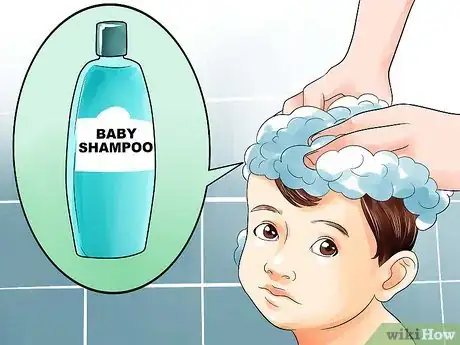
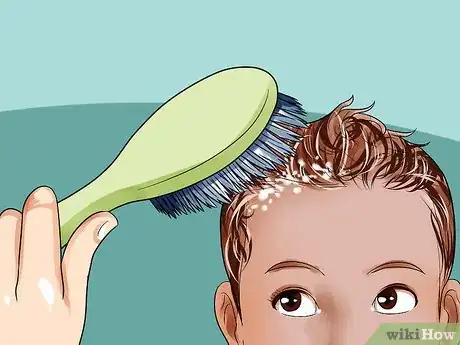
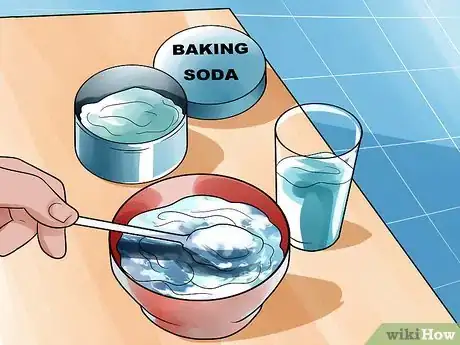
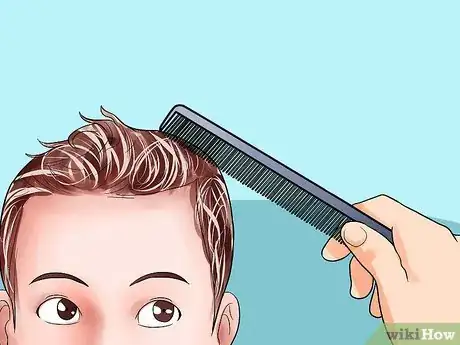
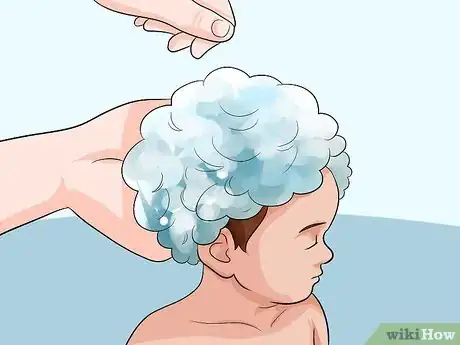
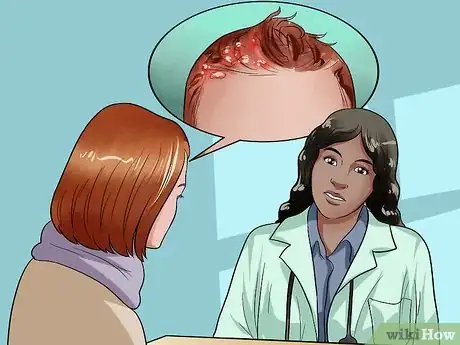






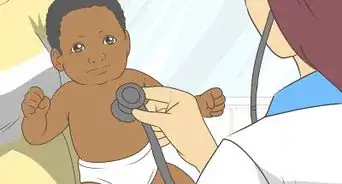
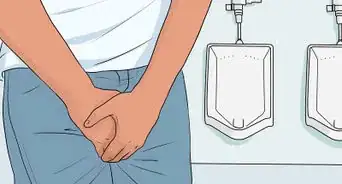
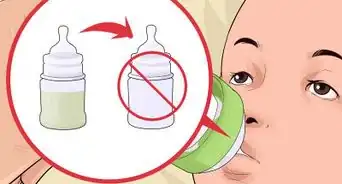
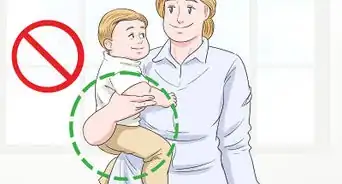


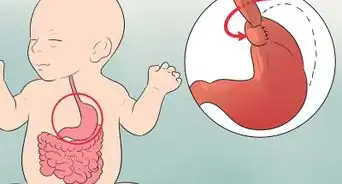

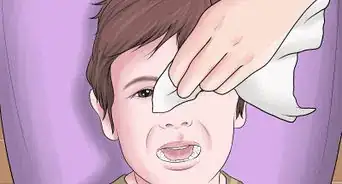

















































Medical Disclaimer
The content of this article is not intended to be a substitute for professional medical advice, examination, diagnosis, or treatment. You should always contact your doctor or other qualified healthcare professional before starting, changing, or stopping any kind of health treatment.
Read More...